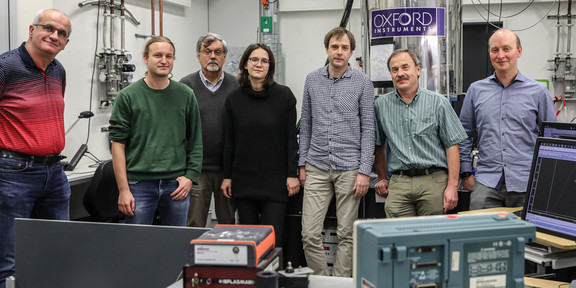Physicists Control Ultrafast Electron Dynamics in Perovskite Materials
- News
- Research

Organic lead halogens with a perovskite crystal structure are considered extremely promising materials for the development of solar cells that can deliver higher performance at a lower cost. In the past ten years, enormous improvements in the quality of such perovskites have been achieved, so that they already rival conventional silicon-based solar cells in the efficiency with which they convert light to electricity. They can be tailored to absorb and convert not only all visible sunlight, but also near-infrared radiation. Their manufacture requires relatively little technological effort and consumes comparatively little energy. Perovskites are not only interesting for solar cells, but in principle could also be used for LEDs or X-ray detectors. The only remaining drawback is the short service life of the components.
It is not yet well understood why the service life of these perovskite components is limited. A large number of research groups around the world are in hot pursuit of this question, with the aim of developing new materials for the energy transition. One key to this is understanding the electronic and magnetic properties of the materials at the atomic level. A team from the Physics Department of TU Dortmund University, together with other colleagues from Germany, Russia, and Switzerland, has now been able to achieve significant progress.
Experiment reveals strong interaction with lead
TU Dortmund University Professor Dmitri Yakovlev's group investigated ultrafast interaction processes between optically excited charge carriers and their surroundings in perovskite crystals. On the one hand, the team was able to show that the magnetic properties can be regulated on an ultrafast time scale through the use of optical pulses with a duration of trillionths of a second. This proof that they can be controlled is of particular interest for possible new applications. On the other hand, it was found that the lifetime of the magnetization of optically generated charge carriers is limited if they interact with nuclear spins. By far the most acute losses were observed in the interaction with the nuclear spin of lead. Thanks to this insight, researchers can now further investigate and develop the material in a targeted manner, by replacing lead with other elements in a series of tests.
The work is a contribution to the research center Future Energy Materials and Systems of the University Alliance Ruhr.
Link to the open access article in the journal Advanced Materials
Contact for further information:









